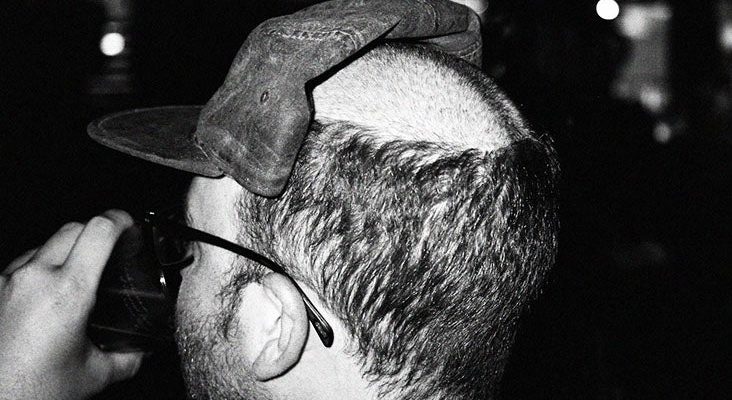
- Researchers say they may have figured out a way to stimulate hair growth by utilizing a tiny RNA particle.
- They report that this treatment was effective in reviving hair growth in old as well as young mice.
- Experts say more research is needed, but the process, if it proves successful in humans, could be an important advancement in treating baldness.
Scientists from Northwestern University say they’ve made a breakthrough that could potentially make a lot of men very happy.
The researchers say they may have found a potential breakthrough in baldness and hair growth.
Their study, first published in the journal PNAS, reports that human hair follicles stiffen as people get older, making hair more difficult to grow. The process is similar to how people’s joints can get stiff as they age, making it more difficult to move around.
However, the researchers say, it could be a different story if the hair follicles are softened, making it more likely they will produce hair.
Details from the baldness cure study
Researchers say they found a way to grow hair – in mice, at least – by softening the stem cells through boosting production of a tiny RNA, miR-205, particle that relaxes the hardness of the cells.
When the scientists genetically manipulated the stem cells to produce more miR-205, they said the result was hair growth in mice both young and old.
“They started to grow hair in 10 days,” Rui Yi, PhD, a professor of pathology and dermatology at Northwestern’s Feinberg School of Medicine in Illinois and a senior author of the study, told SciTechDaily.
“These are not new stem cells being generated,” Yi said. “We are stimulating the existing stem cells to grow hair. A lot of times we still have stem cells, but they may not be able to generate the hair.”
Regulating cells to grow hair
Yi said the scientists have demonstrated it’s possible to stimulate hair growth by regulating cell mechanics.
“Because of the potential to deliver microRNA by nanoparticles directly into the skin, next we will test whether topically delivered miR-205 can stimulate hair growth first in mice,” he said. “If successful, we will design experiments to test whether this microRNA can promote hair growth potentially in humans.”
The team conducted the study in genetically engineered mouse models, using advanced microscopy tools such as atomic force microscopy to measure the stiffness, and two-photon microscopy to monitor cell behaviors in live animals.
Dr. Ken Williams Jr., a surgeon and founder of Orange County Hair Restoration in Irvine, California, told Medical News Today the study was “nicely designed,” with a “hopeful translation to humans.”
“The challenge is that the mouse model does not always translate into the same human observations,” Williams said. “I want to temper any high expectation about these results. It is too early to determine the efficacy or benefit from these studies. We are hopeful that further research will be of value when applying it to humans.”
Other methods for hair growth
Williams also noted that there are several medications in the clinical trial phase that also may be of benefit to humans.
“To date, the proven medical therapies include DHT inhibitors such as finasteride, induction medications such as minoxidil that stimulate hair growth. Other well-known regenerative therapies that are proven safe, tolerable and efficacious are low laser light therapy (LLLT), and platelet rich plasma (PRP),” he said.
Williams said other methods, such as hair cloning, have seemed promising in mouse trials, only to prove non-translatable to humans.
“Hair cloning has been tried for over one-and-a-half decades with good outcomes in the mouse model, but disappointing results in humans,” Williams told medical News Today.
What factors determine hair growth
Dr. Alan Bauman is a hair restoration surgeon and the founder, chief medical officer, and medical director of Bauman Medical Hair Transplant & Hair Loss Treatment Center in Florida.
Bauman told Medical News Today the effectiveness of various hair loss treatments depends on the individual patient and their unique DNA.
“Age is a factor, but there are countless other factors that play into it including hormones and if a patient is predisposed to male or female pattern baldness,” Bauman explained. “Those factors can be even more significant to a hair follicle not growing hair than age.”
Grace Angelique Magalit has a PhD in molecular biology and biotechnology and is the head scientist at Culture.org. She told Medical News Today a breakthrough in hair loss medication could be one of the most in-demand drugs ever.
“Baldness is hereditary, so many people experience this,” Magalit said. “Baldness has also been a source of lowered self-esteem, so having a drug to help with this will really be popular.”
Magalit said she sees a high chance of the method working on humans.
“However, years of human clinical trials will be done before its release to the market,” she said. “Since there are differences in chromosome numbers (between mice and humans), as well as bodily functions, this could potentially have some unwanted effects in humans that is not seen in mice. Hence, the need for clinical trials.”
Source: Read Full Article
